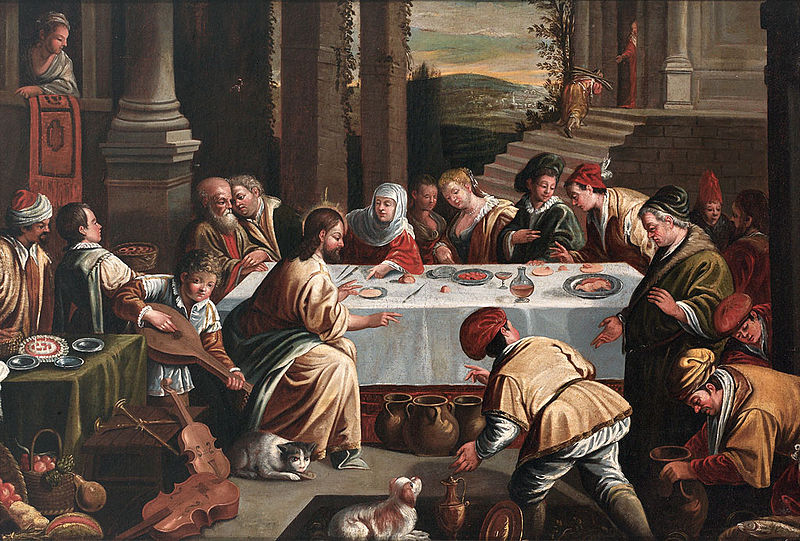“The Church exists to draw men unto Christ, to make them little Christs. If they are not doing that, all the Cathedrals, clergies, missions, sermons, even the bible itself, are simply a waste of time. God became man for no other purpose.”
C S Lewis

Disney did not set out to do Jesus, but The Lion King offers a dramatic compliment to the lesson the Good Book set out to teach from Genesis through to the climax of the cross.
In the beginning we are told that:
“So God created man in his own image, in the image of God created he him; male and female created he them.” [1]Genesis 1:27
The question humankind has grappled with over the eons is: What does it mean to be made in the image of God? That is the meaning scripture set out to decode. That’s where the Bible and The Lion King tag-teamed.
The Lion King and the Bible are both vehicles on a voyage in search of what it means to be made in the image of another.
No sooner than God kicked back to savour the works of His hands, [2]Genesis 1:31 something got into man (Adam) and it all went downhill. So began the biggest project since creation: The search for Meaning.
What has ‘The Fall’ (as they call it) got to do with Mufasa, Simba and Rafikki, not to mention Timon and Pumba? The Lion King and the Bible are both vehicles on a voyage in search of what it means to be made in the image of another.
In The Lion King, a heir, Simba, is born. He is the exact copy of the king, Mufasa, but for him that only means power and privilege. He is excited about having dominion but knows nothing about responsibility. His father’s efforts to prepare him for his calling doesn’t achieve much. But without a full appreciation of whom he is, the cosmos, the chain of being, life, in all its interconnectedness, will suffer. [3]Jeremiah 23:10
Fate steps in. He is called Scar, at once a manipulator and an instrument to instigate a passage from innocence, to responsibility, guilt and consequently, exile of Simba. [4]Genesis 3
That in other words is the story of Genesis. We could of course get religious and talk of Sin and Fallen Man, Death and Life. Or we could ask ourselves why God would see a world which contained ‘the serpent’ and a very real danger of ‘falling’, expulsion from the presence of God and eternal damnation as “very good”? [5]Genesis 1:31 Heaven is going somewhere with that story. Back to The Lion King.
It is not long before Simba steps outside his nature. He keeps company with (among others) a pig and eats what a pig eats – not unlike the prodigal son in Jesus’ parable. [6]Luke 15:11-20 He carries on in a state beneath his kind until he is reminded that he is more than what he has become. He is a Trustee of a royal heritage [7]1Peter 2:9 and the spirit of his father, the king, lives in him. He is exhorted to look at his own reflection closely and he would see his father.
He looks but sees only his own reflection. He looks closer and his father speaks to him from within. He must now recover the glory within. He must give expression to that which is trapped inside. He must redeem the royal essence. He must return home, confront, challenge and overcome his demons. He must take his place in the great chain of being.
Like the cub Simba, our challenge from creation has been to search and live out what it means to be made in the image of the King.
That summarises the kernel of The Lion King, Disney’s unwitting metaphor for a biblical saga. Like the cub Simba, our challenge from creation has been to search and live out what it means to be made in the image of the King. It’s been a slow, frustrating journey. It’s not made easy by the fact that no one is sure what the King looked like.
Through the ages people looked in all the wrong places – to woods and to graven images. They devise rituals and rites, they dance around literally and figuratively, they meditate and philosophise all day long, and do just about anything and worse to come to an understanding of the point of being made in the image of God. In the process we debased and degraded the very essence we set out to recover.
So what to do? Plot a cartoon and call it: Mufasa, Simba and The Search for Meaning? Not quite.
Before them came the man Moses, ancient Israel’s law-giver. He boldly went where no one had been. He had been to the mountain top and back. He had been a divine instrument for signs and wonders; he had overthrown the power of an empire with a stick, he had borne stones written upon with the finger of God. Yet he knew that all of those did not bring him any closer to knowing God any more than others before him. So he pleaded with God:
“I beseech thee, shew me thy glory.” [8]Exodus 33:13
Heaven obliged him. All of God’s goodness were proclaimed to him. The essence of the revealed God did not take any shape or form. It wasn’t fire or earthquake; it wasn’t a lamb or a dove; what was revealed were attributes, the essence of what it means to be godlike: attributes of mercy and graciousness, longsuffering, goodness and faithfulness. [9]Exodus 34:6
That moment passed. The lesson did not sink in. People plodded along, settling for the familiar: Religion.
It was always clear that religion wasn’t the real deal, [10]Hosea 6:6; Isaiah 1:10-18; Micah 6:6-8 but it was close enough – adequate to requirement. With religion we no longer need to strive towards achieving some phantasma; we do not need to conform to some nebula. We can simply remake God in our own image, [11]Jeremiah 8:8 in our likeness and command him to approve of things and people we approve of, hate people and things we hate, [12]Romans 9:11-13 and get his hands bloody while he is at it. Didn’t scripture say “ye are gods”? [13]Psalm 82:6
The millennia in exile had not counted for much. The wheel of knowledge turned painfully slowly. The man in the mirror looked nothing like God. A different approach was required. Something had to give.
As in the visitation at Sinai where the children of Israel did not have what it took to ascend, [14]Exodus 19:10-11 God descended in the fullness of his glory. This time his immanence was not attended by fire or earthquake or a cacophony of sound – he came simply in all his goodness, a complete inversion of how one might expect God to visit.
Jesus came to teach in words and in deeds how to return to type, how to ascend, how to redeem and reflect the hidden glory, how to be made in the image of God.
But it’s not just the form of his appearance that took the world unawares, [15]John 1:10 his whole being – in thought, words and deeds – were as at odds with the wisdom of the ages. Take these samples:
Who is one’s neighbour?
It’s not just the guy next-door; not simply about the one who’s dealt you a good hand; not a member of your family, social circle, kith or kin; not one with whom you’re privileged; not those with whom you share a cultural heritage or bound together in a covenant; in the parable of the Good Samaritan [16]Luke 10:25-37 Jesus’ definition of a neighbour stretched to cover all of the above and also includes perceived enemies! [17]John 4:9.
Who is a leader?
A servant, and no ordinary one at that. At the Last Supper, Jesus shared the last festive meal with those who called him Master. On one side was one he knew would betray him, and on the other was one he knew would deny him. He blessed the food they ate and made them partakers of the covenant it symbolised. Afterwards he knelt before them and washed their feet. Neither the one that he knew would betray him to death nor the one that he knew would deny him in the most desperate moments of his life were excluded from his love, service and benevolence.
This was not a hollow ritual. He told them it was ‘the way’ he wanted them to relate to one another. Hence his followers were called ‘People of the Way’. As Steve Chalke wrote in Being Human, it’s an upside down, inside out, subversive way of being and living. Christ said that’s what it meant to be godlike:
“But I say unto you, Love your enemies, bless them that curse you, do good to them that hate you, and pray for them which despitefully use you, and persecute you; That ye may be the children of your Father which is in heaven: for he maketh his sun to rise on the evil and on the good, and sendeth rain on the just and on the unjust… Be ye therefore perfect, even as your Father which is in heaven is perfect.” [18]Matthew 5:44-45,48
He came to teach in words and in deeds how to return to type, how to ascend, how to redeem and reflect the hidden glory, how to be made in the image of God. He pleaded that we should learn from him. God Almighty exhorted us to pay attention to him.
The Lion King makes for good entertainment, yet calls for reflection.
Hollywood loves a good ending. Simba returns home and overcomes his demons. With his victory heaven opens and the balance of nature was restored: shoots of green, flowers bloom and divine blessing upon Pride Rock. He also goes on and begets a heir in his own image. It’s the circle of life.
It makes for good entertainment. It also calls for reflection. Chalke recounts a joke about Jesus Christ coming to establish God’s Kingdom, a community of people who live as Christ taught and therefore reflect the image and glory of God, but alas, all Christ got for his troubles was the Church.
We could be the generation to challenge that joke. It’s never too late to start.
References
| ↑1 | Genesis 1:27 |
|---|---|
| ↑2, ↑5 | Genesis 1:31 |
| ↑3 | Jeremiah 23:10 |
| ↑4 | Genesis 3 |
| ↑6 | Luke 15:11-20 |
| ↑7 | 1Peter 2:9 |
| ↑8 | Exodus 33:13 |
| ↑9 | Exodus 34:6 |
| ↑10 | Hosea 6:6; Isaiah 1:10-18; Micah 6:6-8 |
| ↑11 | Jeremiah 8:8 |
| ↑12 | Romans 9:11-13 |
| ↑13 | Psalm 82:6 |
| ↑14 | Exodus 19:10-11 |
| ↑15 | John 1:10 |
| ↑16 | Luke 10:25-37 |
| ↑17 | John 4:9 |
| ↑18 | Matthew 5:44-45,48 |


